The triangle cichlids (Uaru) are a small genus of cichlids in terms of the number of species, with only two scientifically accepted species: U. amphiacanthoides from the Amazon basin and upper Orinoco (Brazil and Colombia) and U. fernandezyepezi from the Rio Atabapo (Venezuela). Both species reach a total length of 20-30 cm and are therefore large cichlids. They are close relatives of the discus cichlids (Symphysodon), with which they also have a few things in common. Outside the spawning season, both genera are sociable animals that like to swim in groups with their own kind, both prefer higher water temperatures (26-32°C) and both initially feed their young with skin mucus. In contrast to discus, however, Uaru are predominantly vegetarians.
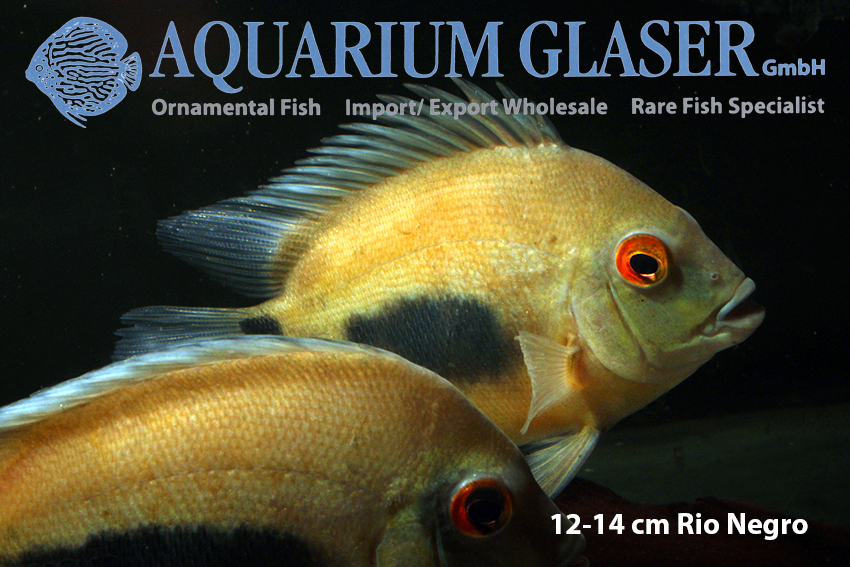
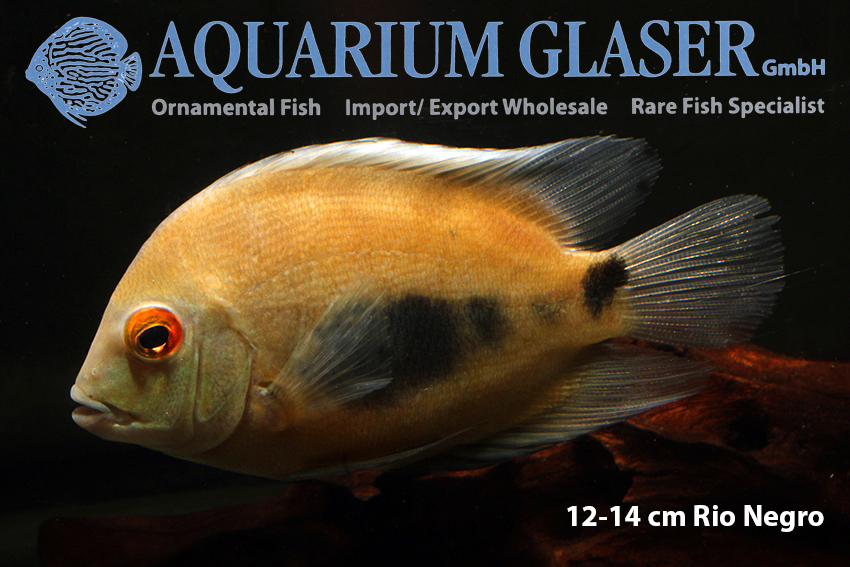
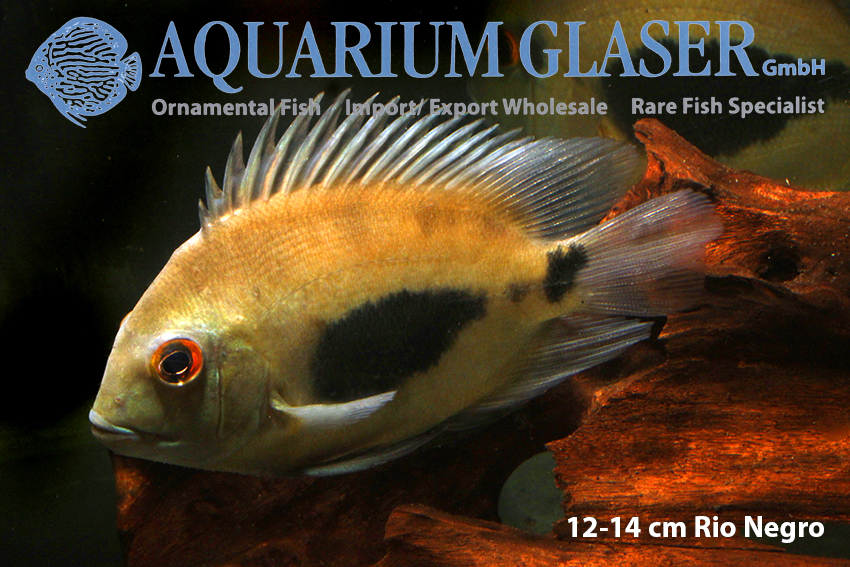
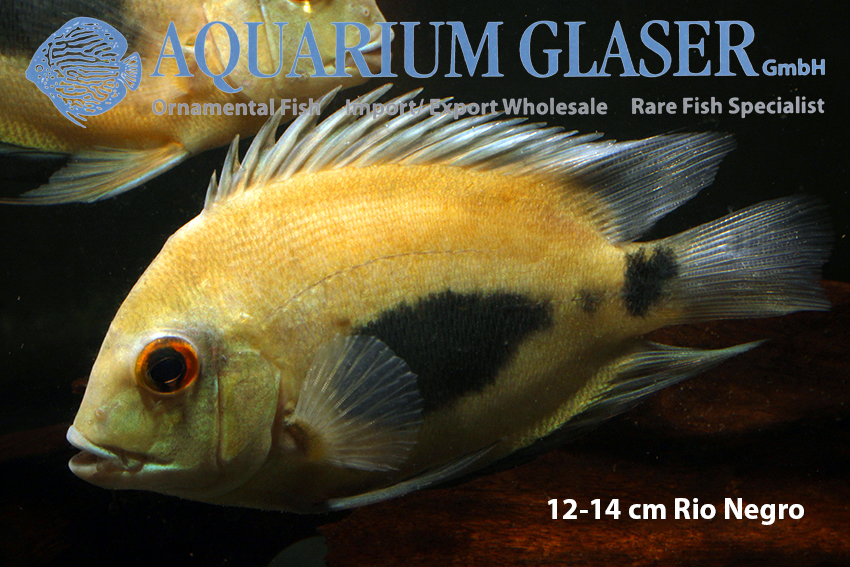
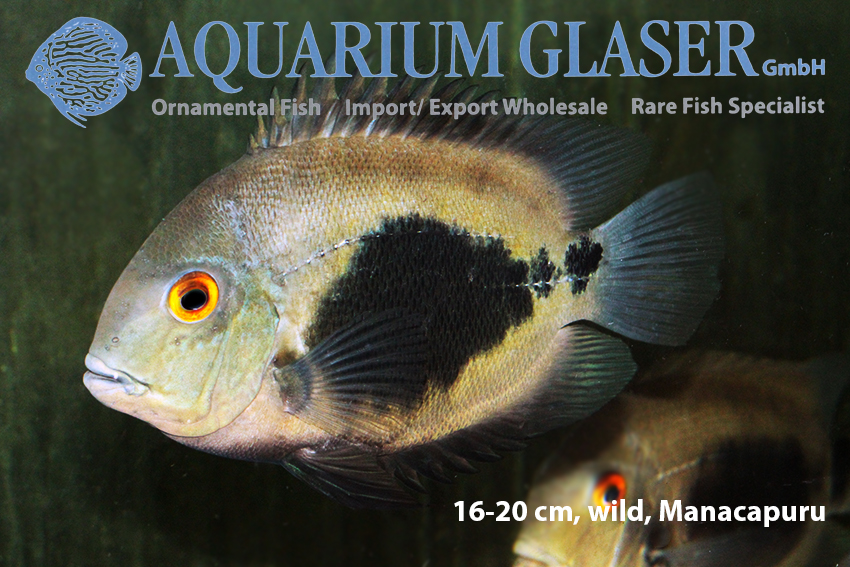
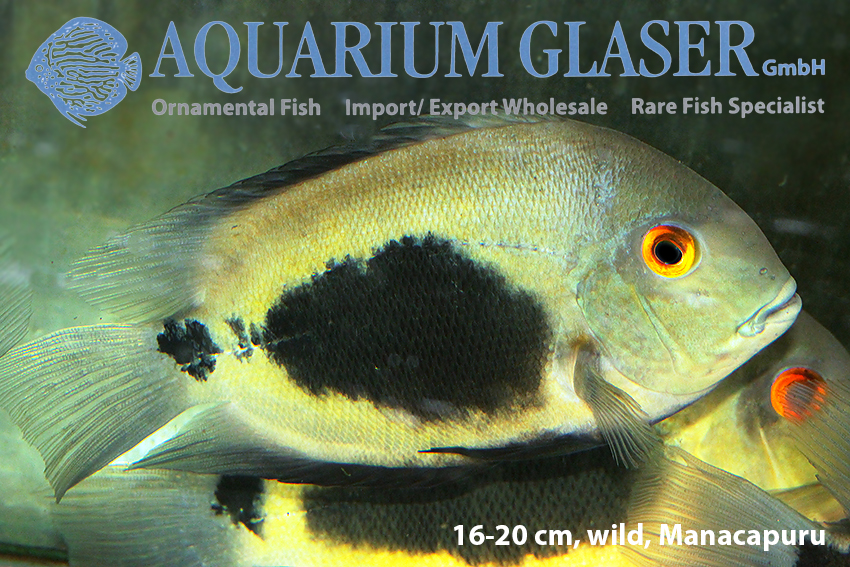
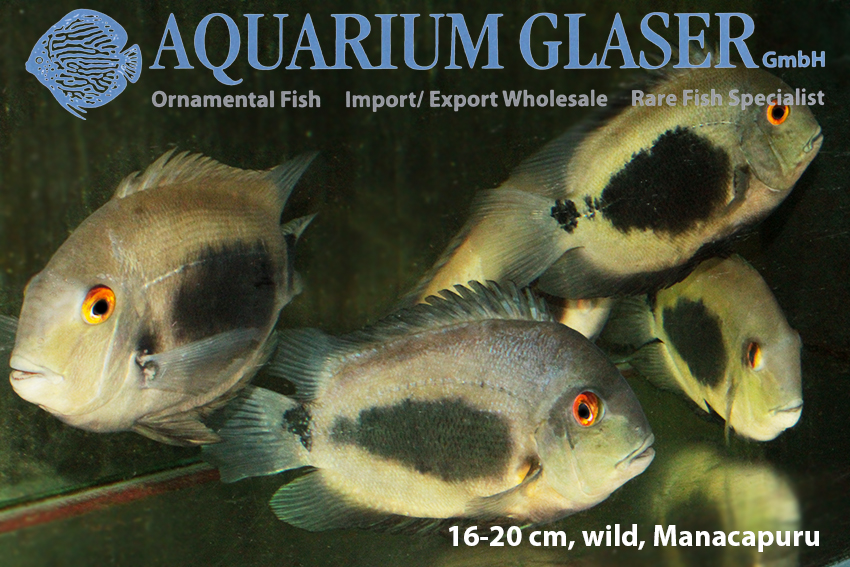
There is a debate in the hobby as to whether there are one or two species of triangle cichlids under the name U. amphiacanthoides. Normally in U. amphiacanthoides the prominent large black triangle spot is below the upper lateral line branch. This applies to the Uaru usually kept in the aquarium; we have also occasionally received wild-caught specimens of this species from the Rio Negro in Brazil, the type locality of U. amphiacanthoides, which corresponded quite characteristically to this type of pattern. Many years ago, however, we were able to import adult Uaru from the vicinity of Manacapuru, about 100 km upstream of the confluence of the Rio Negro with the Amazon, which had a different appearance. Four of the five specimens had a significantly larger wedge-shaped spot that extended into the upper branch of the lateral line. The fifth specimen, on the other hand, looked completely “normal”. Werner Schmettkamp first introduced the form with the enlarged wedge-shaped spot to the aquarium literature in 1980 as the “orange-colored triangle cichlid”. It is still unclear and controversial whether this orange triangle cichlid from Manacapuru is an independent species or a local variant of U. amphiacanthoides. Unfortunately, we only have aesthetically unappealing pictures of this extremely rare fish.
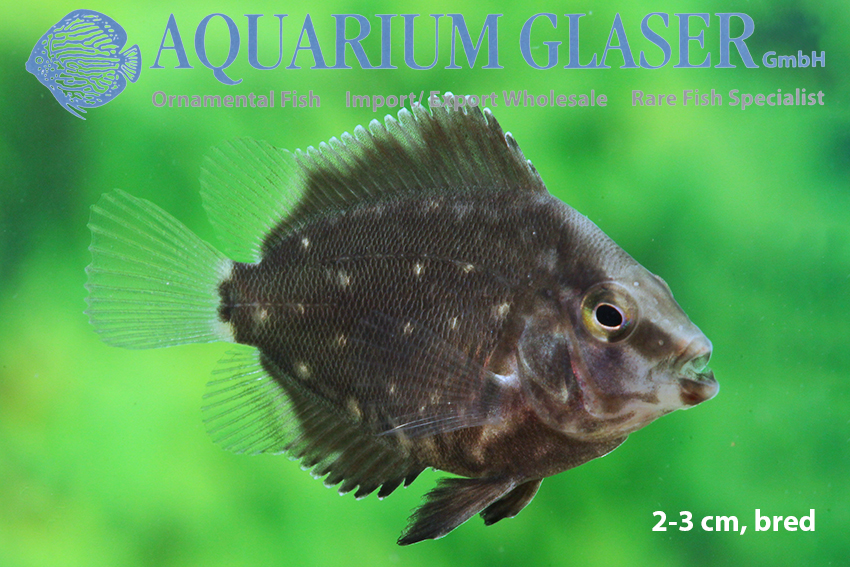
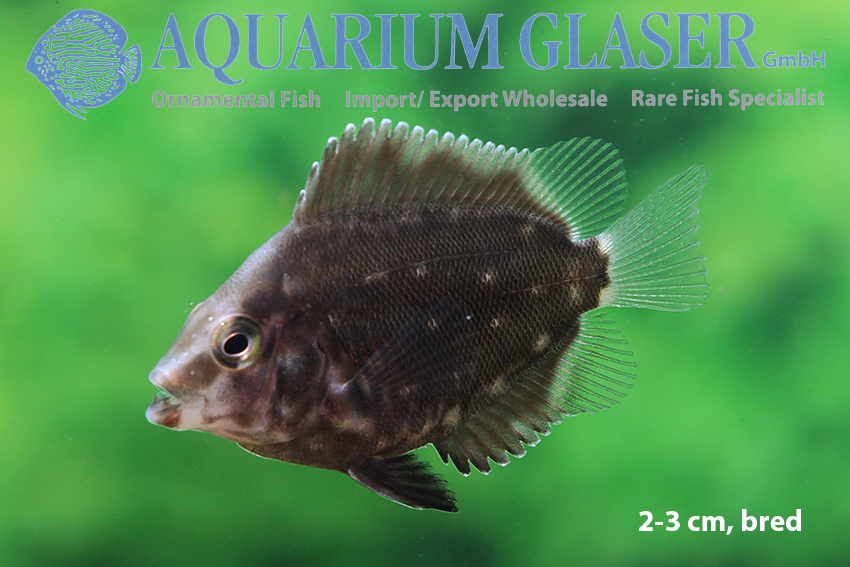
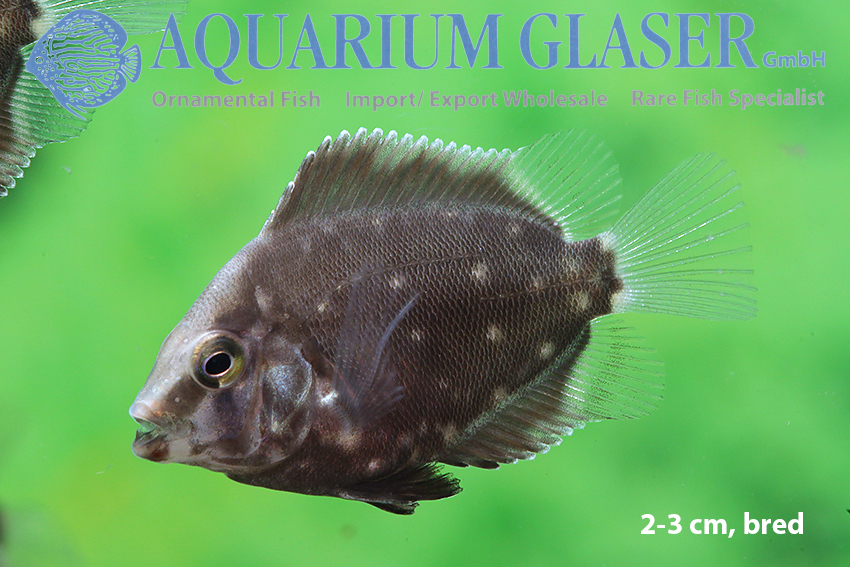
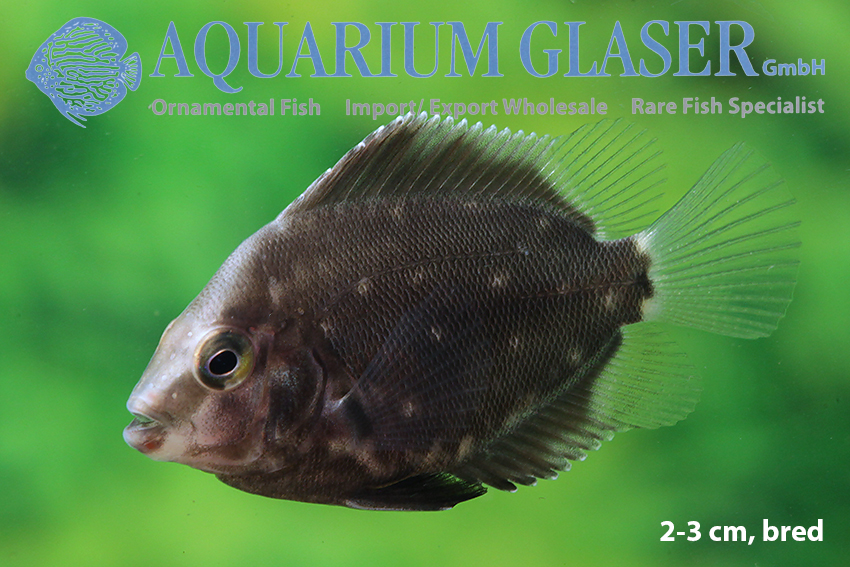
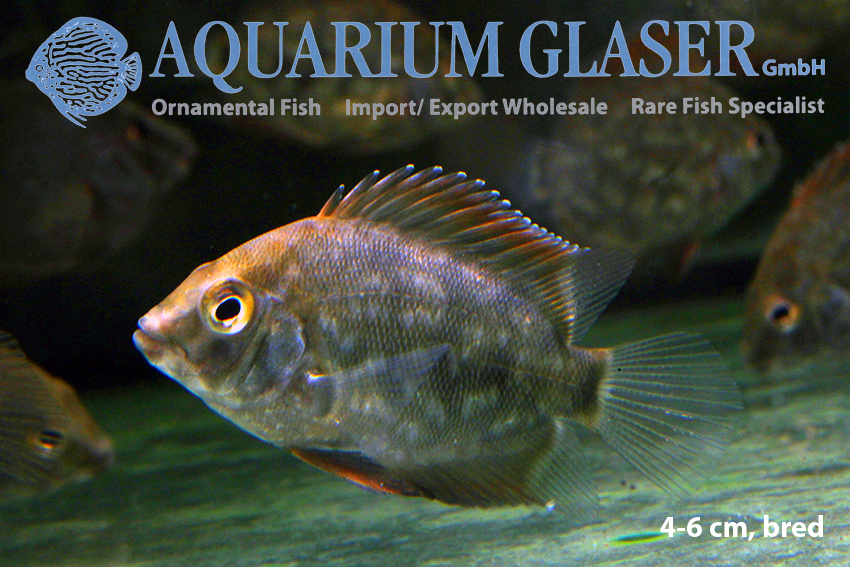
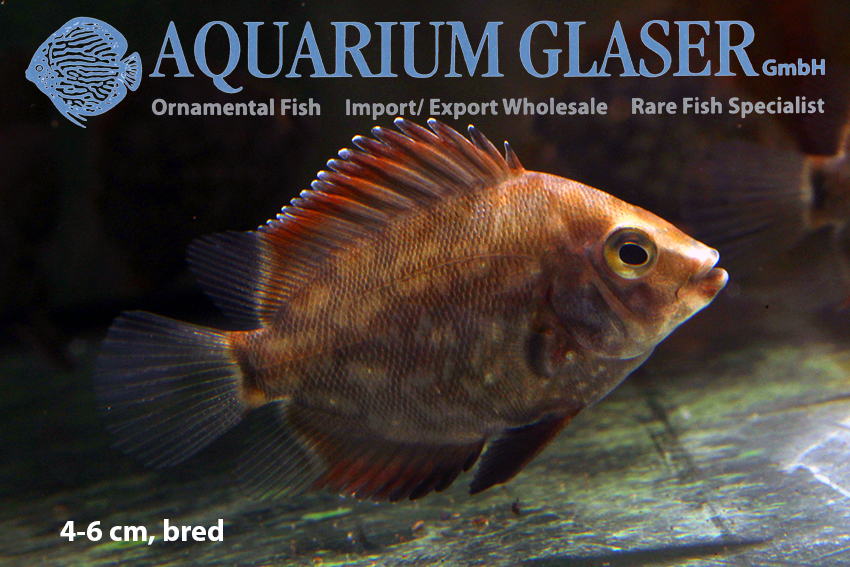
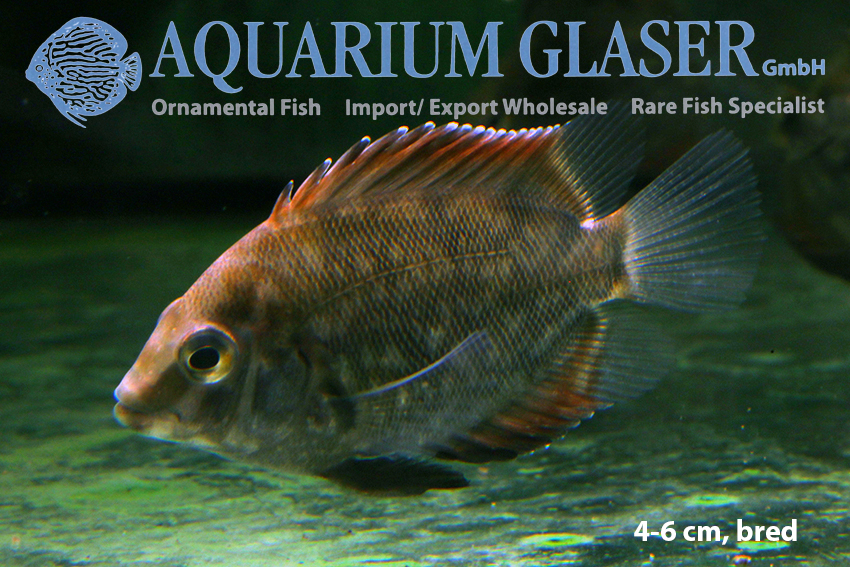
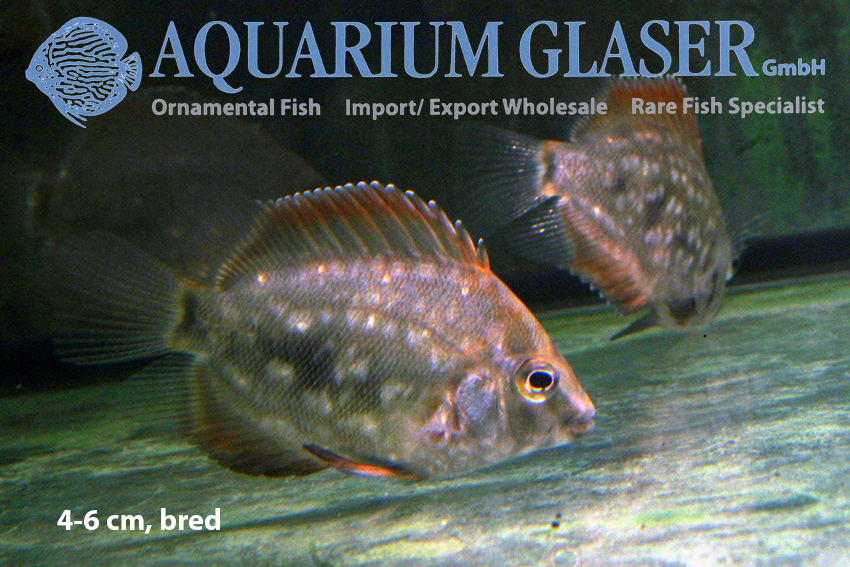
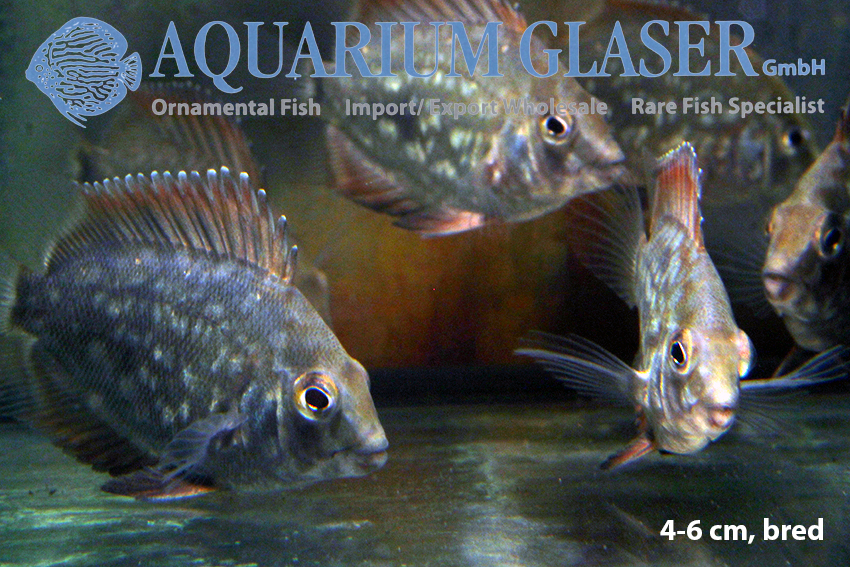
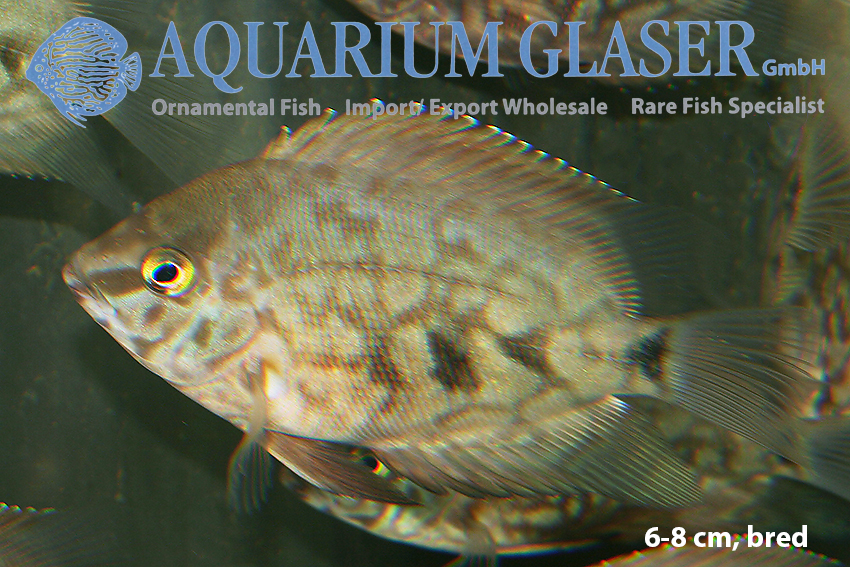
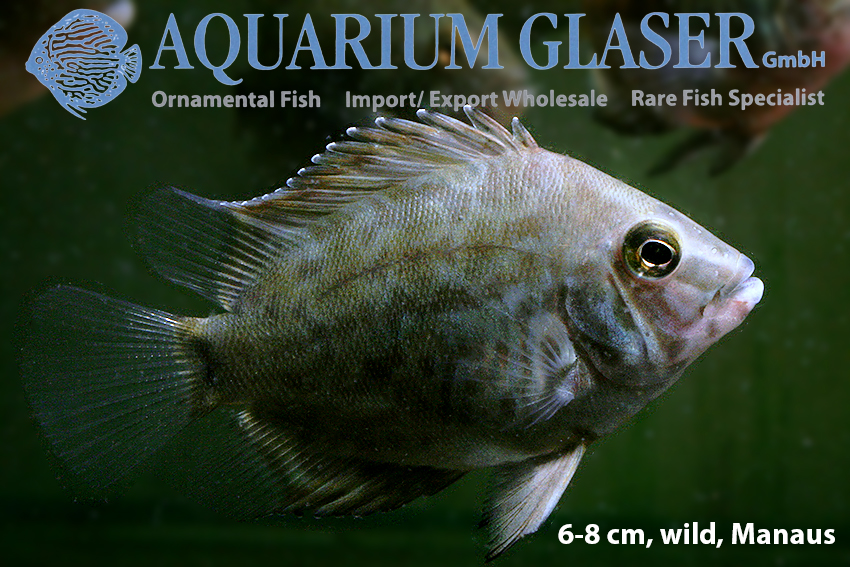
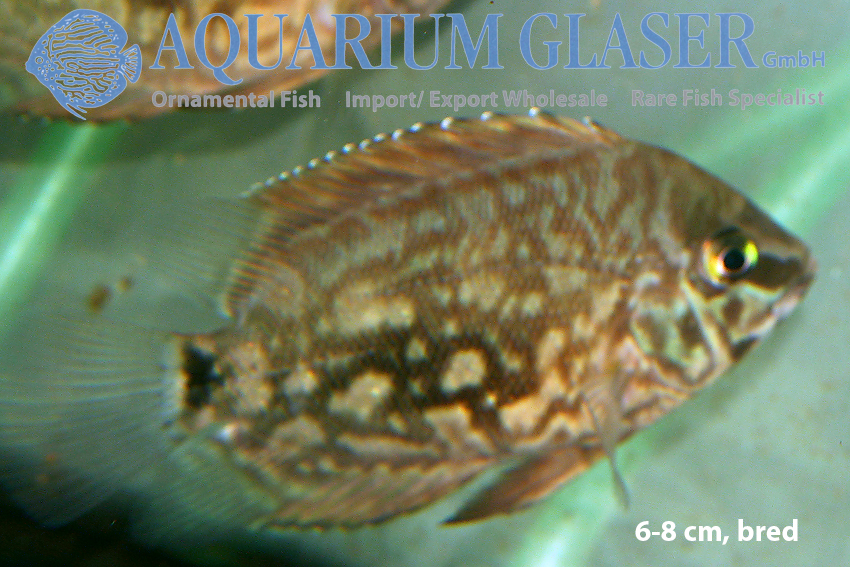
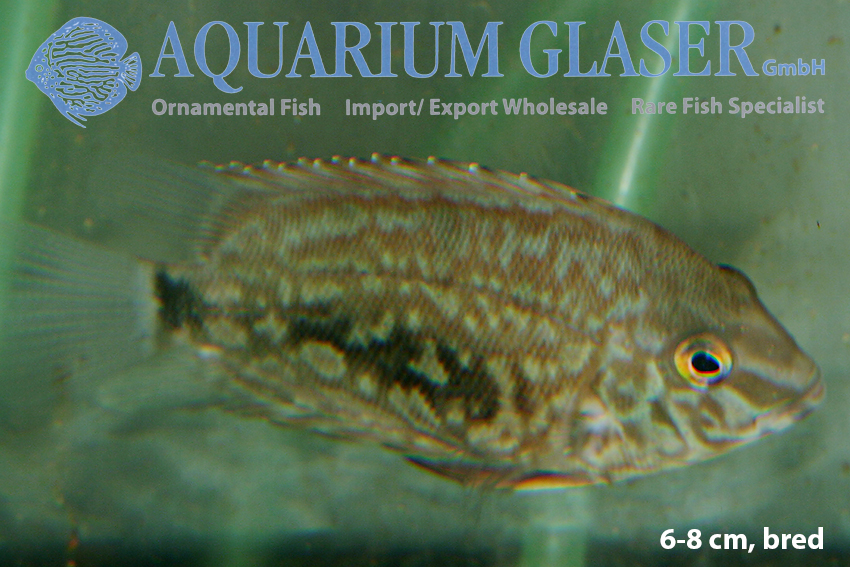
There are probably only a few fish species that change their coloration as strikingly as Uaru amphiacanthoides in the course of their growth. There is not just one, but several very different-looking coloration phases, which already caused enormous confusion when first imported (1913) and first bred (1916). Uninitiated observers undoubtedly consider the different age stages to be different species due to their coloration, especially as the body shape also changes considerably from the 2-3 cm long juvenile to the over 20 cm long adult. In this post we will therefore show you some of the most striking coloration stages of U. amphiacanthoides. Please note that there are of course transitional phases.
Both wild-caught and captive-bred specimens are available in the trade. While the comparatively rarely imported wild-caught specimens almost always consist of adult or sexually mature animals that are over 12 cm long, the reverse is true for captive-bred specimens. Uaru amphiacanthoides are anything but rare in the wild and are traded everywhere in the region as comparatively cheap food fish. However, ornamental fish collectors rarely take the trouble to acclimatize the initially somewhat timid animals, especially as demand is not very high. Understandably, large wild-caught fish are always relatively expensive, as the freight costs are considerable.
Males and females cannot normally be distinguished with certainty in Uaru. Females remain somewhat smaller, are fuller and have shorter pelvic fins, but in individual cases you cannot rely on these generalized differences. It is always best to purchase a group of 6-8 specimens (or more if space permits), from which pairs will form. These fish are open breeders with biparental brood care. As already mentioned at the beginning, the young eat skin particles from the parents, but they are not dependent on this food and can also be reared with the usual foods. Uaru are usually peaceful towards other fish. It is important to cover their plant food requirements. Planting Uaru aquariums is usually not successful for obvious reasons.
For our customers: the offspring 2-3 have code 688500, 4-6 cm have code 688502, the wild-caught 12-15 cm code 688516 and the wild-caught 16-20 cm code 688518 on our stock list. Please note that we only supply the wholesale trade.
Text & photos: Frank Schäfer




